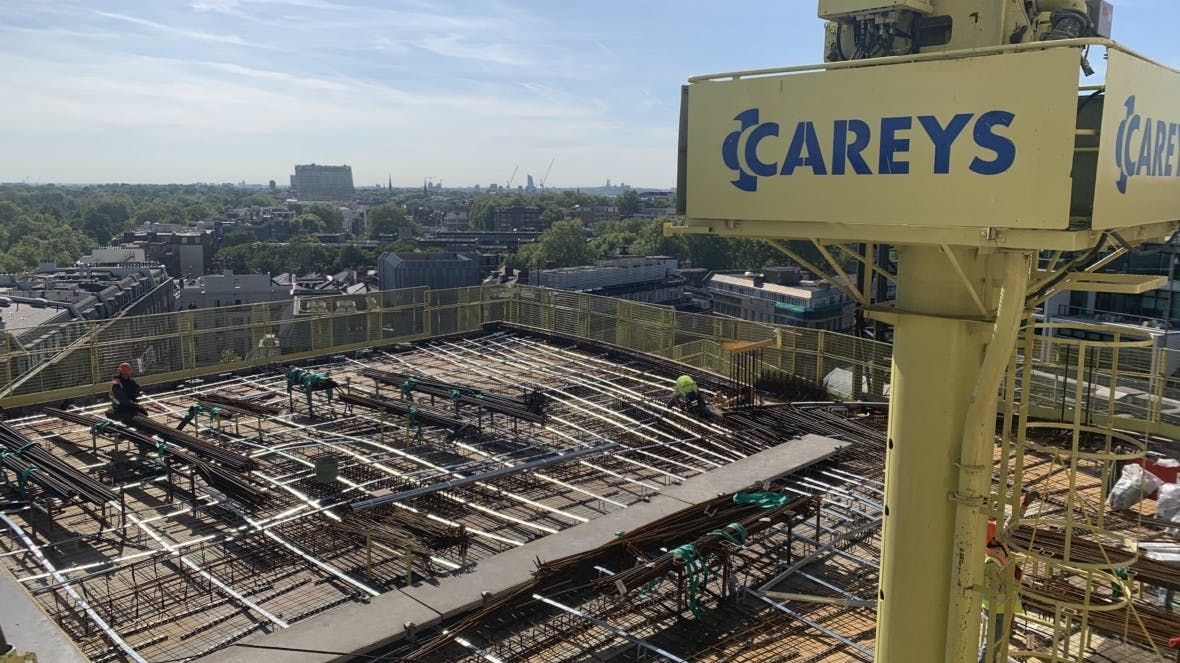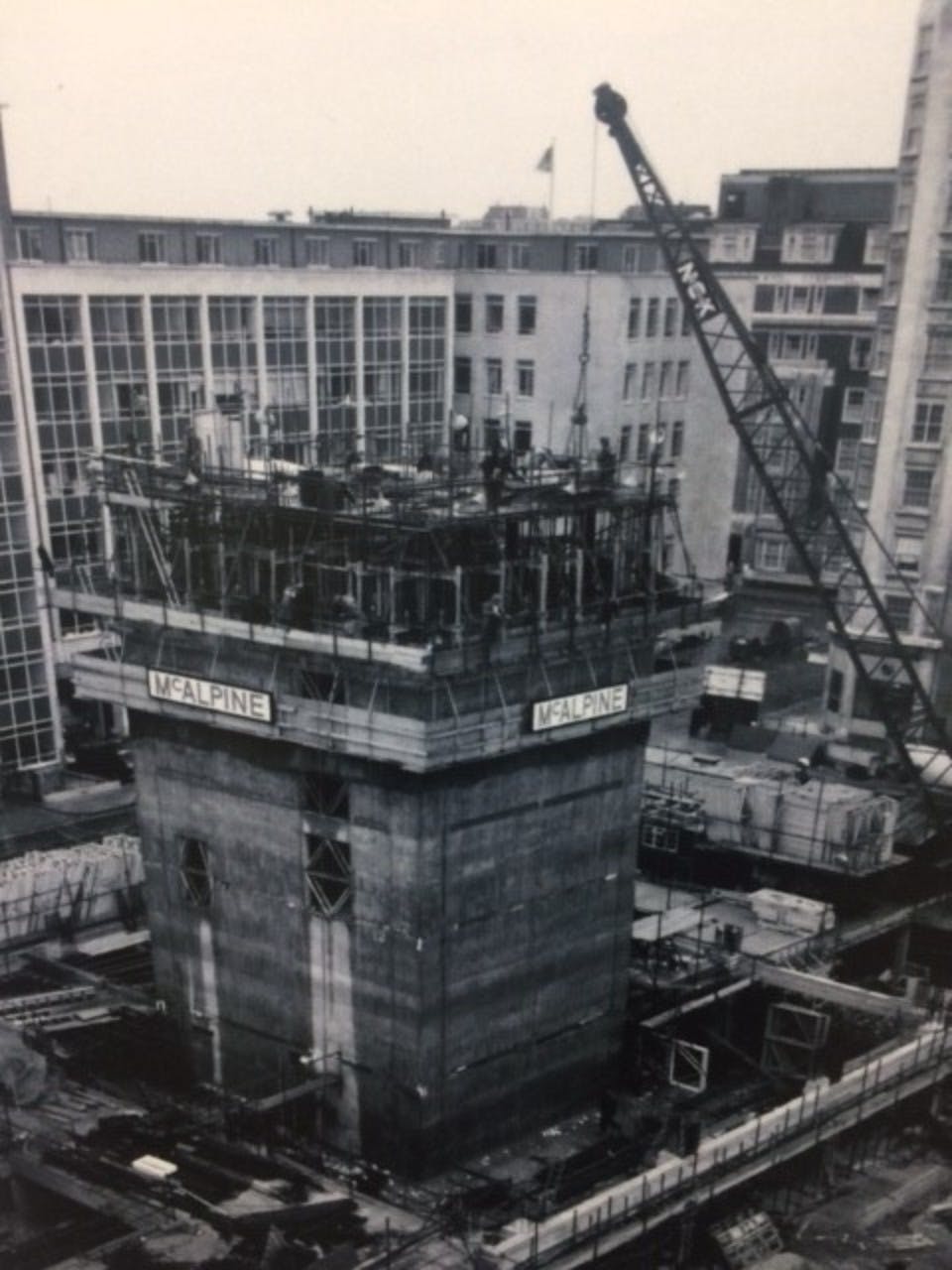Careys attains significant project milestone at Marble Arch Place

Careys Civil Engineering has reached a key milestone on the Marble Arch Place project – with our recent completion of the slip form operations on the development’s two concrete cores.
- The Carey Group
- Friday 17th May 2019
Share this:-
At Marble Arch Place – which is located on a busy, central London junction between Edgware Road and Marble Arch – our team is carrying out top-down excavation of a basement that extends over five storeys and will provide 4,000m2 of space per level. We are also constructing the two superstructures that will soar to seven and 18 storeys respectively.
Upon completion in 2020, Marble Arch Place will provide the highest-quality specification of any residential or commercial building in London. The development’s apartments and offices will benefit from wonderful views of Hyde Park and the West End, with several floors featuring large terraces.
In-depth planning and meticulous execution lead to effective, rapid slip form core construction
Our customarily precise logistics management and planning processes have been critical for the successful delivery of this project, which entails the excavation of 90,000m3 of earth and the pouring of 30,000m3 of concrete – all within one of the busiest areas of London.
We slip formed the taller of the two cores – which, when fully built, will become an 19-storey residential tower with 54 apartments – to a height of 77m, in just 16 weeks, a formidable achievement. As a result of our speedy progress, we have been able to place tower crane 2 on top of the residential slip form, which has allowed subcontractor, Grants, to begin the façade works below.
In a similar feat, we slip formed the second of the cores – which will eventually accommodate a seven-storey commercial building with over 95,000ft2 of high-quality office space – to a height of 33m, in just 5 weeks. Because of our quick completion of this element of the programme, tower crane 4 has been able to be relocated on top of the slip form. This has enabled, subcontractor, Bourne’s, to commence structural steelwork.
An impressive slip form building achievement
When constructing the two concrete cores – we were able to achieve an average of 1.2 metres per day – reaching a maximum of 1.8 metres. We accomplished this, despite being limited to functioning within strict working hours, which were imposed due to the close proximity of neighbouring residential properties.
To enable the smooth operation of the slip form system, Careys Design Team devised a series of bespoke solutions to overcome TW hold points through integration with the permanent works elements. These value engineering options have ensured that the slip form could continue without hold points needing to be observed – which has helped to expedite the process further.
We have also implemented a number of notable additional measures, which have led to the efficient operation of the slip form, and contributed to the timely delivery of the concrete cores. These include:
- Installing acoustic bearings within the slip form rig – the first time this has been done in Europe. Positioning the elements and perfecting the methodology required forensic planning
- Using steel columns, in lieu of more standard concrete columns, during adaptations – which facilitated their easier removal and demolition during the high-risk portions of the build
Slip form techniques have improved substantially over the decades
Our successful and quick deployment of the slip form methodology at today’s Marble Arch Place project stands in stark contrast to the pace of construction on the original Marble Arch Tower. Constructed using an earlier type of slip form technique, back in the early 1960s, the original Marble Arch Tower took four years to complete, between 1962 and 1966.
The former Marble Arch Tower rose to 82m and comprised 166,000ft2 of mixed-use property. This building housed a 24-storey office tower, shops that fronted Marble Arch and Edgware Road, and an Odeon cinema that featured the largest post-war cinema screen built in Britain and, until 1997, the biggest cinema screen in London.

We'd love to hear from you, so please get in touch